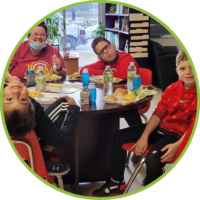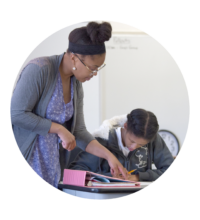By Dr. Diane Myers, SVP, Special Education—Behavior at SESI
While the Covid-19 pandemic is not known for producing many silver linings (if any), it has highlighted the need for increased attention to the social, emotional, and behavioral well-being of our students. The pandemic has caused significant educational disruption, limited social contacts, and increased fear and anxiety around everyday activities. For those students who needed additional social, emotional, and behavioral supports prior to the pandemic, the impact has been felt even more acutely. With collective concern building around the state of our students’ mental health, social-emotional learning (or SEL) has become a primary focus for many educators across the country.
If you Google “social emotional learning,” your search will yield over three billion results. If you narrow your search to just news items containing the phrase “social emotional learning” for the past 48 hours, you’re likely to get at least four pages of results. While the need for increased SEL support is critical, how to provide increased SEL support can present challenges. Should SEL be provided solely by social workers or counselors? Which curriculum should we use? How does SEL fit with our regular behavior support systems? Does SEL replace those systems? While all of these questions are valid, one-size-fits-all answers are hard to define. Instead, we should define desired outcomes for our SEL programming and determine how we can augment our current supports with evidence-based SEL practices to achieve those outcomes.
In order for our SEL efforts to have the most impact, we should (a) ensure that any SEL programming aligns with key SEL competencies, (b) integrate SEL programming with existing systems to the greatest extent possible, and (c) use data to drive our SEL implementation. Let’s look at each of these considerations more closely.
Ensure Any SEL Programming Aligns with Key SEL Competencies
According to the Collaborative for Academic, Social, and Emotional Learning (CASEL.org), the five broad key competencies of social-emotional learning are:
- Self-awareness

- Self-management
- Responsible decision-making
- Relationship skills
- Social awareness
Being skilled in these competency areas increases the likelihood of a student’s success in school and in all other areas of their lives. In addition, all of the competencies are interrelated: for example, it’s hard to build relationships without social awareness, and it’s hard to have social awareness without self-awareness. All five competencies should be addressed in SEL programming.
Integrate SEL Programming with Existing Systems to the Greatest Extent Possible
Because the skills associated with these competencies are critical to students being able to successfully navigate the school day (as well as time spent at home and out in the community), integrating SEL instruction within our daily programming can maximize the efficiency of our instruction and increase the potential for generalization across settings and all areas of their lives. Educators should maximize opportunities to integrate SEL programming into existing academic and behavioral support systems.
For example, a teacher planning to have students work in groups on a project could integrate SEL by doing the following during the introduction of the lesson:
- Have students review the instructions, various activities, and final assignment and identify any areas that may be particularly difficult for them. Students write a short reflection on the identified difficulty and their rationale (self-reflection). In addition, students identify three ways they’ll deal with any challenges and how they’ll access help if needed (self-management).
- Students then can identify the role they’d like to take in the group (e.g., note-taker, reporter, researcher) based on their strengths and sketch out a timeline for how they’ll meet the responsibilities of that role (self-management and responsible decision-making).
- While assigning groups, the teacher can conduct short sessions on the requisite social skills for group work (e.g., listening, sharing, providing feedback) and create a mechanism so each group reflects daily on what worked for the group and what didn’t (relationship skills and social awareness). Assessment of the final project should include evaluation of SEL competencies and related growth.
 In addition, most schools and classrooms have existing behavior support structures where SEL integration would be a natural addition. For example, schools and classrooms using a positive behavioral interventions and supports (PBIS) framework likely have broad expectations related to “Being Respectful” and “Being Responsible.” Instruction in self-awareness, self-management, and responsible decision-making could easily be integrated with instruction in “Being Responsible;” instruction in relationship skills and social awareness could be part of instruction related to “Being Respectful.” At SESI, we use PBIS as a framework for supporting students’ behaviors, and SEL instruction is a key practice within that system.
In addition, most schools and classrooms have existing behavior support structures where SEL integration would be a natural addition. For example, schools and classrooms using a positive behavioral interventions and supports (PBIS) framework likely have broad expectations related to “Being Respectful” and “Being Responsible.” Instruction in self-awareness, self-management, and responsible decision-making could easily be integrated with instruction in “Being Responsible;” instruction in relationship skills and social awareness could be part of instruction related to “Being Respectful.” At SESI, we use PBIS as a framework for supporting students’ behaviors, and SEL instruction is a key practice within that system.
Use Data to Drive SEL Implementation
Finally, we always want to use data to drive our SEL implementation. Be sure to assess specific areas of need. While many students may improve their social-emotional competence through the integration of SEL with existing programming (as discussed above), some students will certainly need more intensive, individualized SEL supports. Social workers and other highly trained staff members may create their own SEL lessons or use one of the many existing SEL curricula that CASEL has vetted (see CASEL.org for more information). While all students can benefit from SEL instruction as part of their daily programming, resources are limited, and we want to be sure that our more intensive supports are prioritized for those students with the highest level of need. Social skills inventories, self-reporting instruments, student observations, and interviews with families can all provide valuable data on which students should receive more intensive SEL supports. In addition, progress monitoring is critical so we can adjust our levels of support in response to increasing or decreasing needs.
While the spotlight on SEL is unlikely to wane in the near future, we should continue to pay careful attention to the implementation and execution of SEL supports in our schools. As a premier provider of education services for K-12 students who require additional educational and behavioral supports, SESI recognizes the importance of—and need for—effective social-emotional learning, which is why SEL is embedded into everything we do in both our standalone schools and In-District Classrooms.

About the author: Diane Myers, Ph.D. is senior vice president, special education – behavior for Specialized Education Services, Inc. Her professional and scholarly expertise focus on positive behavioral interventions and supports, students with emotional and behavioral disorders, and staff implementation of evidence-based practices to support the needs of all students.
